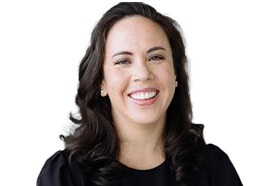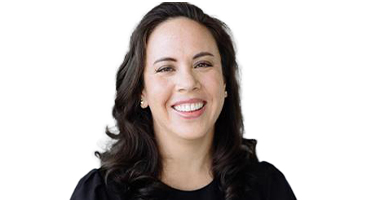Healthcare finance can best be described as the proper assessment of the revenues, expenses, assets and liabilities coming into an organization and using these figures to manage the budget to stay profitable, and to project future costs and expenses. While the concepts are not new, the ability to harness technology to perform finance functions has, arguably, revolutionized financing processes and expanded its abilities.

“Sometimes you just try to leverage the technology that you already own, but sometimes something is so good and different that you should focus on integrating that. The point is not always to go one way or the other, but to be thoughtful about how you go about it.”
Smart healthcare finance departments that properly use the capabilities of their enterprise resource planning (ERP) platforms and other finance department processes know they need to upgrade their tools continually to deliver accurate historical representation of the accounting, data-driven projections, and proper management of cash. But knowing doesn’t always lead to doing.
Upgrading finance functions can be bewildering because it’s not simply buying the best affordable platforms. Healthcare leaders must consider factors such as their interoperability with existing technologies, the cost-to-benefit ratio, and the ability to be used properly by personnel.
“Sometimes you just try to leverage the technology that you already own, but sometimes something is so good and different that you should focus on integrating that,” said Grant Thornton Healthcare Delivery Leader David Tyler. “The point is not always to go one way or the other, but to be thoughtful about how you go about it.”
Setting baselines
Assessing the advantages
Grant Thornton Healthcare Advisory Senior Manager Jacob Brennan said choosing how to modernize health system financing can be seen as just picking the “right tool,” but if it is right, then it should provide organizational leaders the ability, and the desire, to make it part of the decision-making process. “Finance modernization can evolve to where it becomes ingrained in the culture and an organizational commitment to expand its approaches and use cases,” Brennan added.

“Finance modernization can evolve to where it becomes ingrained in the culture and an organizational commitment to expand its approaches and use cases.”
As an example, robotic process automation (RPA) possibilities have advanced to the point where most of the mundane data gathering and tabulating tasks are automated. These enhancements allow for decisions to upskill an organization’s talent and promote job satisfaction, Brennan said. Improving accuracy allows management to be more responsive to operational demands.
But as Grant Thornton Technology Transformation Senior Manager Kaitlyn Ramirez warns, one common mistake healthcare organizations make is to turn their IT teams loose to get open source automation, AI, without doing a critical planning and assessment process.
When goal-setting, better finance tools can use metrics to increase quality and decrease cost to deliver across the organization, Tyler said.
The need for interoperability
One obvious concern when modernizing a financial platform is to make it compatible with everything else already being used by a healthcare organization. Interoperability of financial datasets is a crucial need as this can be a prime source of inefficiency and error.
“Healthcare organizations can end up with tools that don’t really solve their challenge, and now they’ve just added another layer of potential complexity.” Brennan said.
Without question, organizations looking to improve their automated finance processes should include examining whether their existing systems merely need an upgrade—a good way to ensure system interoperability remains largely unaffected.
“I do believe in the golden rule of leveraging your existing platform to the extent possible, and then be thoughtful with where gaps may be.” Brennan said. “Clients appreciate that mindset, versus seeing what sticks.”
But Ramirez said upgrading should also include finding opportunities to bring finance processes to “the next level.” Integrating new process automation tools such as RPA with an existing ERP, for instance, can make it more powerful and give health systems a level of understanding of their finances not possible with a simple upgrade.
“However, sometimes the second generation of a particular type of technology is dramatically less expensive than the first,” Tyler said, “and ‘the most advanced’ isn't always ‘the best.’”
Whatever route is chosen, adequate planning is the key to making new systems work together, Brennan said, because every healthcare organization does tasks like budgeting, invoice processing and expense management a little differently.
Related resources
PURPLE PALADIN
Accounting steps
Factoring in healthcare’s uniqueness
Finance automation tools must tailor their solutions to the unique circumstances of healthcare. Ramirez, who has a background working in manufacturing, said one clear difference about healthcare data compared to that of other industries is that it’s coming from people, not machines.
“That may seem obvious, but in the healthcare domain, we’re constantly working to fill information gaps of what happened in patients’ holistic journeys because people data points can be scattered and require much transformation to be useful information,” Ramirez said. “Available data to fill those gaps is often left to age because there isn’t a programmatic approach to leverage the data.
“With healthcare organizations, their downfall can be that they don't have proper data management and data governance to actually use the data assets they have,” Ramirez said, “and then they don't take that next step to automation because their data is not interoperable—it's not properly managed, it's not properly governed. They just never make that next maturity leap to better processes.”

“With healthcare organizations, their downfall can be that they don't have proper data management and data governance to actually use the data assets they have.”
Brennan said that, compared to an industry like banking which commonly uses predictive analytics to identify fraud, manage portfolios, analyze loans, healthcare is about providing patient services, and has different capital constraints, traditionally relying on more descriptive and manual analysis of data.
What this means is that the industry, as a whole, is a bit behind others in modernizing its finance operations, Brennan said, which can present itself as an opportunity for improvement if realized. In that circumstance, the introduction of process automation leveraging RPA technology can produce better data gathering, collection, and timely cash flow management and forecasting.
Healthcare organizations also have the burden of an unusual amount of government compliance requirements, Ramirez said, something automation can track and address. Healthcare’s relative lag in modernizing finance compared to other industries also means lessons learned from other sectors can be adopted with less trial-and-error.
Health systems must provide high-quality healthcare but also have to manage expenses for medical supplies, equipment and staffing, so the goal is to find a sweet spot where patient outcomes are of foremost concern while the cost-savings from better financial management are realized, Brennan said.
For instance, Tyler said from a purely financial interest, a healthcare system may have the potential to adopt a fairly aggressive bill collection process or pursue rapid growth. But leadership may not want to achieve optimal financial goals if doing so conflicts with the mission of a healthcare system, because its overall goals are likely different than those of a bank or a profit-focused business.
“All health systems are focused on margins and good financial performance, but there is some altruism involved in this business, too.” Tyler added.
More versatile options
One prime consideration for healthcare organizations looking to improve their finance functions is determining whether it should accompany moving the ERP systems into the cloud. This trend started less than 10 years ago in healthcare, and for many organizations, costs savings and reduction of risks of compromised data were the primary drivers.
However, Brennan said moving organizational data to the cloud also can have a real benefit for the finance function since not only can it be a transformative process, but likely enables better usage of peripheral and complementary automation solutions such as RPA, optical character recognition (OCR), and intelligent document processing. Brennan said there are opportunities for improvement in many finance functions.
Routine and transactional tasks associated with month-end close, account reconciliations, comparing balances of critical general ledger accounts, and invoice processing can be automated more, and particularly if their systems have not migrated to a cloud-based solution. Adopting technology for scanning and processing documents directly into the ERP system can enhance invoice payment and contract management, for example.
More significant opportunities can be found for financial reporting, too. Having systems in the cloud can more readily enable organizations to pull disparate data from multiple sources, including from electronic medical records’ billing information, and with that use, for instance, enable more accurate, consistent, predictable, reliable reporting for management on a month-to-month basis.
“We've done a lot of work in modernizing accounts payables process and technology,” Brennan said, as well as maturing cases in cash forecasting and accounts receivable management.
The shift to automation in the cloud takes organization and effective change management, Ramirez said, since as an organization is able to become more predictive in its financial processes, it takes a mindset shift to be able to make decisions based on the probabilities that the models are generating.
Finance modernization in other industries
Managing the human factor
What can cause problems concerning finance automation in healthcare is when an organization approaches opportunities without knowing its processes well or prefer to follow the same pattern versus, rethinking it as a whole. Internal financial integration processes may be clear enough, but the other processes and entities with which it interacts with are not.
“If not intentionally designed, the touchpoints where automation delivers information to the human experts can be prime for failed automation efforts because, although the automation technology can be a fit for the middle of a process, the final mile for a human to take action is still broken or was not modernized accordingly,” Ramirez said.
“Some folks assume that one column of data means the same thing across systems, and that can create inefficiencies,” Brennan added. What is important in these circumstances is that that organizations employ a development strategy, or a “playbook” to address these sorts of integration issues. The idea is to establish more of a controlled iterative process because if processes are programmed wrong or ineffectively, adjustments must be made.
Ultimately, the function of finance automation is to get information to an employee who either is delivering a service to a patient or is pushing through the next step in the financial process. Because human oversight is so critical, Ramirez said, the design of the automation must be easy to learn and use. This is often a “landmine” for healthcare organizations in that the automation and its predictive capabilities aren’t designed for the employees who actually are tasked to do something with the output.
AI has long been used as a diagnostic tool in healthcare but it is only starting to be appreciated for its role in finance. Ramirez said proper human oversight into the use of AI in finance automation comes down to three factors: consent, traceability and explainability.
- “Consent” means AI practices must uphold patient privacy and data restrictions as guided by HIPAA standards and its counterpart in Europe, the General Data Protection Regulation (GDPR).
- “Traceability” refers to the concept of tracing the path of money through an organization backwards to its source. Proper AI function should not obscure this.
- “Explainability” is an increasingly important concept in AI and refers, in this context, to the responsibility healthcare providers have to be able to explain how finance models work and how to audit themselves with them.
Conclusion
One other important “people factor” to consider when analyzing financial data is simply following it. Tyler said that better financial platforms and procedures can give healthcare leaders projections and indicate paths forward, but sometimes it requires choices that may be difficult for organizations to make for reasons for other reasons, be they business, personal or political.
Often the use of third-party advisers can assist in the process, especially to unblock institutionalized barriers. As Brennan said, there is usually some variation in how best to approach. It is essential that decision-makers know the process well and proceed with planning that enables and manages continued growth, transformation, and scalability of an organization’s automation initiatives, especially as opportunities continue to mature.
Using a structured approach, an outside advisor familiar with solutions and different ERP systems, and which financial automation features mesh with them and process best, can help navigate leaders to appraise options that they otherwise may not have considered.
As previously mentioned, the integration of more modern automation features into the finance function doesn’t only simplify and speed up the work, but provides new actionable conclusions that may require new ways to think about planning. Outside advisors can help decision-makers identify these opportunities and reveal a path to more secure growth.
Contacts:







Content disclaimer
This Grant Thornton Advisors LLC content provides information and comments on current issues and developments. It is not a comprehensive analysis of the subject matter covered. It is not, and should not be construed as, accounting, legal, tax, or professional advice provided by Grant Thornton Advisors LLC. All relevant facts and circumstances, including the pertinent authoritative literature, need to be considered to arrive at conclusions that comply with matters addressed in this content.
Grant Thornton Advisors LLC and its subsidiary entities are not licensed CPA firms.
For additional information on topics covered in this content, contact a Grant Thornton Advisors LLC professional.
Finance modernization in other industries
More healthcare insights

No Results Found. Please search again using different keywords and/or filters.
Share with your network
Share